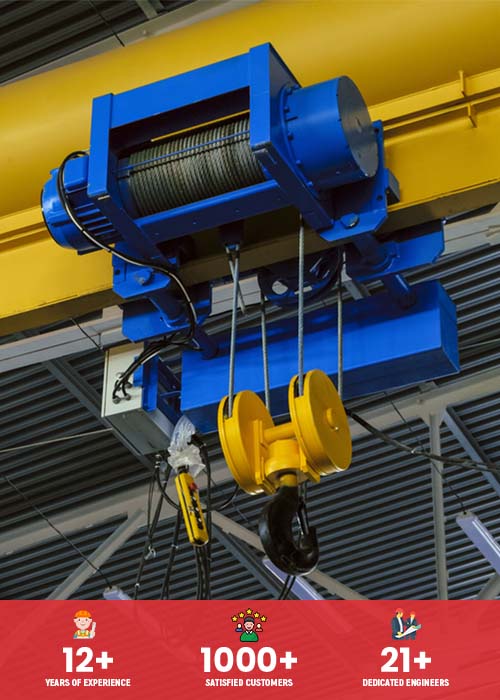Innovative Types And Applications of EOT Cranes
EOT cranes manufacturers in india
Cranes are among the most frequent machinery found in both large and small businesses. The crane’s main aim is to make physical tasks easier by lifting huge weights with the help of mechanical arms. A crane operator has been assigned the task of driving and operating the crane, as he is an expert in crane operationsThe material handling sector has long relied on Electric Overhead Travelling (EOT) cranes, which have revolutionised the lifting and transportation of large cargoes. Although conventional EOT cranes have been in use for a long time, a good EOT crane manufacturer is making new models with cutting-edge features and uses which are being utilised in different sectors.
The article examines the development of EOT cranes from a new angle, highlighting their innovative varieties and highlighting their special qualities.
What is an EOT crane?
EOT crane is most frequently used to lift and move large objects. These electrically powered cranes can be controlled by an operator cabin that is fixed to the crane, a control pendant, or a radio/IR remote pendant. These cranes are capable of lifting both large and small loads. Because it has a parallel runway that is joined to a moving bridge, it is also referred to as a bridge crane. On the moving bridge is the hoist installed. Crane Hook Up and Down Lifting Trolley Lateral Movement, Crane Long Travelling Longitudinal Motion are its three functional movements.
Articulating Arm EOT Cranes
The development of articulating arm cranes is a notable milestone in EOT crane technology. These cranes have articulating, retractable, and flexible arms that can reach places that are challenging to access. When exact load placement is essential, like in factory assembly lines, warehouses with asymmetrical layouts, or building sites with limited space, articulating arm EOT cranes perform exceptionally well. Their capacity to accurately navigate around barriers and arrive at designated destinations makes them indispensable for maximising production and efficiency.
Automated Guided Vehicle (AGV) EOT Cranes
AGV EOT cranes, which integrate autonomous navigation systems with the lifting capabilities of EOT cranes, are the result of the integration of automation and EOT crane technology. These cranes can function without the need for human interaction because of their sophisticated control algorithms, cameras, and sensor systems. Dynamic warehouse environments are ideal for AGV EOT cranes because of their ability to move loads autonomously, maximise available storage, and work in perfect harmony with inventory management systems. AGV EOT cranes increase worker efficiency, save labour expenses, and improve safety by doing away with the need for manual control.

Robotic EOT Cranes
Robotic EOT cranes are a major advancement in the automation and robotics fields. These cranes have robotic arms that can carry out intricate operations including sorting, stacking, and assembling different objects. The sophisticated grippers and tooling systems fitted to the robotic arms enable them to precisely handle a variety of materials and objects. Robotic EOT cranes are used in manufacturing, logistics, and automotive industries. By automating repetitive activities and lowering human error, they can greatly boost throughput, efficiency, and accuracy.
Smart EOT Cranes with IoT Integration
EOT cranes have developed into intelligent, networked systems since the introduction of the Internet of Things (IoT). The sensors, actuators, and data transfer capabilities of these smart cranes allow for predictive maintenance, real-time monitoring, and operational optimization. Through the gathering and examination of information on load weight, crane performance, and environmental parameters, intelligent EOT cranes may maximise energy usage, avert equipment malfunctions, and enhance overall effectiveness. IoT technology integration improves safety, makes proactive maintenance possible, and offers insightful data for process improvement.




